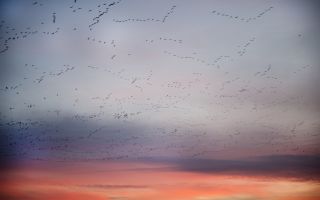
Pink-footed geese and Morecambe Bay
A familiar sight over Morecambe Bay in winter is the characteristic v-formation of pink-footed geese. These incredible birds spend winter in the UK arriving from their breeding grounds in Greenland, Iceland and Spitzbergen and can be seen in flocks around the Bay throughout the winter months.
But why the v-formation?
Not surprisingly, birds are clever and over millennia have worked out that flying in this way helps the flock save energy, which is vitally important when conditions are harsh and food scarce. As the birds fly forward through the air, their wing tips create turbulence (a bit like a racing car) pushing the air immediately behind the bird down. To the side, an upwash or drag is created (again like a racing car) allowing the bird flying behind to be pulled along and thereby using less energy.
Studies have shown that the best position for birds such as geese to follow is a metre behind and to the side of the bird it is following, leading to the v-formation. If you spend a bit of time watching a skein of geese, you’ll quickly notice that the leader of the flock changes regularly, thereby giving every bird a rest, as the bird at the front is without doubt doing all the work! It isn’t only geese which use this efficient method of movement. The formation can be seen in ibises, cranes, cormorants, gulls, swans and also pelicans, although we are unlikely to see those over Morecambe Bay!
Much is still unknown about the v-formation used by flocks and research has yet to reveal whether the leading birds are chosen and if so, why, and what levels of cooperation exist between flock members. I always feel that some mysteries of the natural world should remain, and when I gaze up to the skies on hearing the iconic “wink-wink” call of the pink-footed geese each winter, I often wonder what journey they are on and why.
You can see pink-footed geese all around Morecambe Bay during the winter months, but a particularly good place to see them without the risk of disturbing them as they rest and feed up, is from the Furness Line travelling between Arnside & Grange-over-Sands, or from the various viewing hides at RSPB’s Leighton Moss nature reserve.
Sarah Mason, CEO
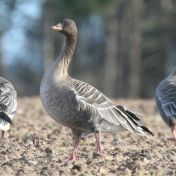
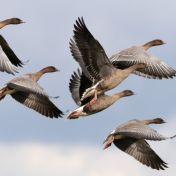
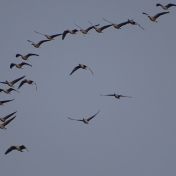
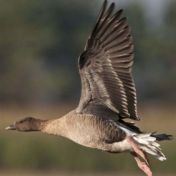

Morecambe Bay's saltmarshes, sands and mudflats are designated as internationally important. It's one of the top three places in the UK for overwintering birds, along with the Wash and the Ribble Estuaries.
Explore more Birds of the Bay here
Explore more pages and connect with all that is special about the Bay. Be inspired to explore, learn or get involved.
Explore more of Morecambe Bay